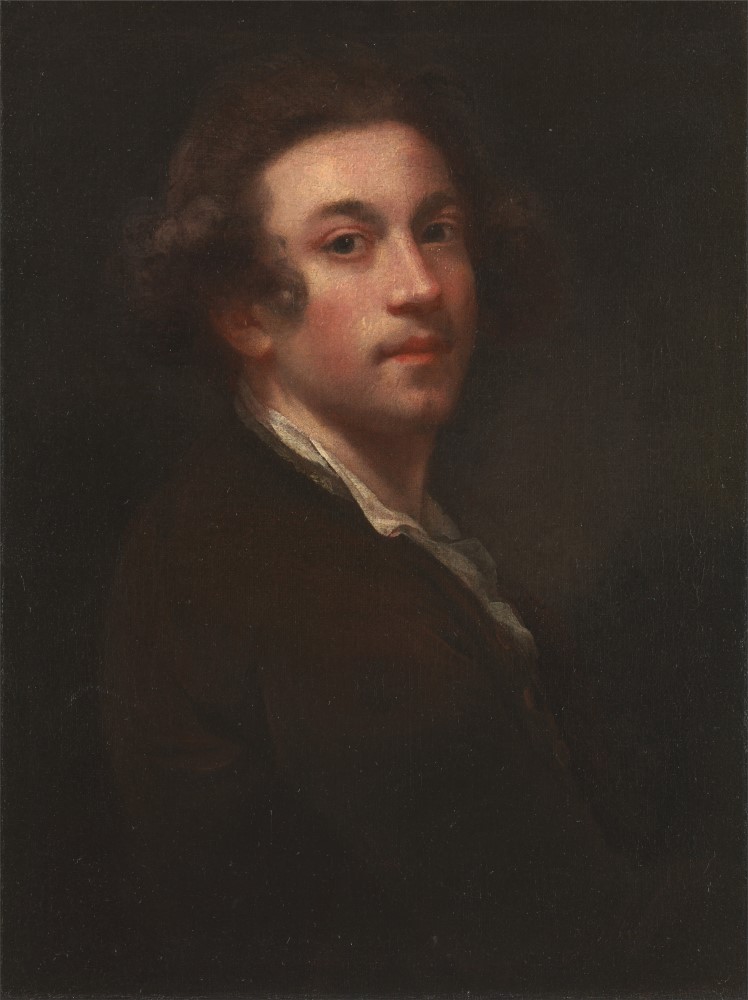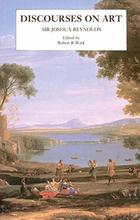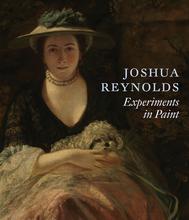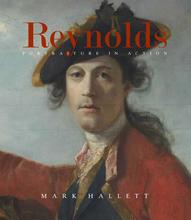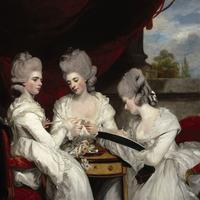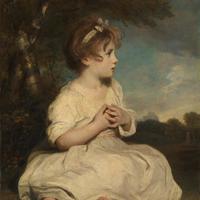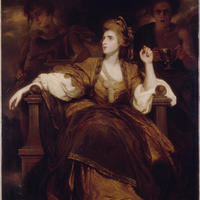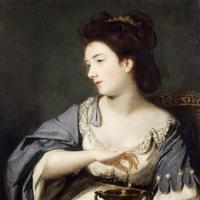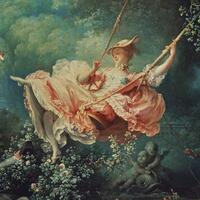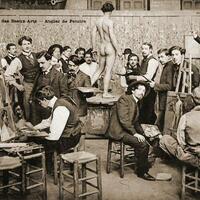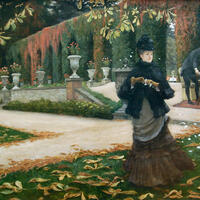More about Joshua Reynolds
- All
- Info
- Shop

Sr. Contributor
Pablo Picasso might have been speaking of Joshua Reynolds when he said, “Good artists copy, great artists steal.”
Joshua Reynolds (Sir Joshua to you) discovered his own talent for art by imitating his older sisters’ sketches. At the height of his career, he cranked out 100 portraits a year by borrowing poses from earlier artists, and outsourcing his signature classical drapery and costume to studio minions. In his defense, this was common practice at the time.
He was also a whiney little baby. Reynolds and his colleague/rival Thomas Gainsborough co-founded the Royal Academy, and Reynolds was elected the first president. When he and Gainsborough competed for the office of Principal Painter to the King, Reynolds threatened to resign from the Academy if he didn’t get the position. When he got the position, he complained about how much he hated it, saying, “The King’s rat catcher I believe is a better place.” We hope that Gainsborough bitch-slapped him.
Despite the grandiose aesthetic and derivative poses of his works, Reynolds’ goal was to humanize his subjects. A social butterfly and casual drinker who believed that wine loosened the tongue, he had lively conversations with his sitters as he painted them to get an impression of their character. Thus he developed a colorful intellectual circle that included such luminaries as stage star Sarah Siddons and fellow painter Angelica Kauffman.
Reynolds loved the ladies in general and found that he got more customers by populating his studio with the famous beauties of the day. He courted the famous diarist and novelist Fanny Burney, but she refused to accept a marriage proposal after he suffered a paralytic stroke. He is also rumored to bang his muses, including the courtesan, a.k.a. high-class hooker, Kitty Fisher, “who visited his house for more sittings than were strictly necessary” (18th-century speak for, “they had lots of hot sex all over his studio”). Of course, this can’t be proven, but we choose to assume the dirtiest.
Even so, Reynolds never married, claiming, “Every woman whom he had liked had grown indifferent to him.” His sister and live-in housekeeper had a different theory about his perennial bachelorhood, calling him “a gloomy tyrant.” Reynolds’ reputed ugliness may not have helped. His lip was disfigured after a fall from a horse, and his skin was scarred by smallpox. He was also partially deaf and eventually went blind in one eye. Joshua Reynolds: Lucky in art, unlucky in love, life, and looks.

Featured Books & Academic Sources
The following is an excerpt from the book "Sir Joshua Reynolds; A Collection of Fifteen Pictures and a Portrait of the Painter with Introduction and Interpretation" by Estelle M. Hurll, published in 1900:
The name of Sir Joshua Reynolds holds a place of honor among the world's great portrait painters. To appreciate fully his originative power one must understand the disadvantages under which he worked. His technical training was of the meagrest kind, and all his life he was hampered by ignorance of anatomy. But on the other hand he combined all those peculiar qualities of the artist without which no amount of technical skill can produce great portrait work.
He had, in the first place, that indefinable quality of taste, which means so much in portraiture. His was an unerring instinct for poise, drapery, color, and composition. Each of his figures seems to assume naturally an attitude of perfect grace; the draperies fall of their own accord in beautiful lines.
Reynolds knew, too, the secret of imparting an air of distinction to his sitters. The meanest subject was elevated by his art to a position of dignity. His magic touch made every child charming, every woman graceful, and every man dignified.
Finally, he possessed in no small degree, though curiously enough entirely disclaiming the quality, the gift of presenting the essential personality of the sitter, that which a critic has called the power of "realizing an individuality." This is seen most clearly in his portraits of men, and naturally in the portraits of the men he knew best, as Johnson.
It is a matter of constant amazement in studying the works of Reynolds to observe his "inexhaustible inventiveness in pose and attitude." For each new picture he seemed always to have ready some new compositional motive. Claude Phillips goes so far as to say that in the whole range of art Rembrandt alone is his equal in this respect. This versatility was due in a measure to his story-telling instinct. His imagination seemed to weave some story about each sitter which the picture was intended, as it were, to illustrate. From Lord Heathfield, refusing to yield the keys of Gibraltar, to little Miss Bowles, dropping on the ground in the midst of her romp, through the long range of mothers playing with their children, there seems no end to the variety of lively incident which he could invent.
The pose of the sitter suggests some dramatic moment in the imaginary episode. Often the attitude is full of action, as in the Miss Bowles, and at times there is a striking impression of motion, as in Pickaback. So strong is the dramatic effect conveyed by these pictures that the figures seem actually taken unaware in the very act of performance, as by a snapshot in modern photography. This quality of "momentariness," as Phillips calls it, so dangerous in the hands of a commonplace painter, lends a peculiar fascination to many of Reynolds's pictures. That he also appreciated the beauty of repose we see in such portraits as Penelope Boothby and Anne Bingham.
Reynolds's inventiveness was so overtaxed by his enormous number of sitters that it is scarcely to be wondered at that it sometimes failed him. Occasionally he resorted to such artificial devices as were common among his contemporaries. Such fresh inspirations as the Strawberry Girl and Master Bunbury could come but rarely in a lifetime. The spontaneity of Miss Bowles is perhaps unexcelled in all his works.
Reynolds's compositional schemes are of an academic elegance reminiscent of Raphael. He knew well how to accomplish the flow of line, the balance of masses, the symmetry of outline, which produce a harmonious effect. A variety of designs were at his command, from the well-worn but always effective pyramidal form illustrated in many single figures, to those more novel forms he invented for groups such as Lady Cockburn and the Duchess of Devonshire.
Reynolds was frankly a borrower from many sources. In the Roman, the Bolognese, the Venetian, Flemish, and Dutch schools, he found something to appropriate and make his own. From Rembrandt he took suggestions of lighting, and such sombre color harmonies as are seen in the portrait of Mrs. Siddons. Something of bloom and splendor he caught from the florid Rubens; something of the decorative effectiveness of such pictures as Lady Cockburn may be traced to the influence of Titian and the Venetians. Yet to all that he borrowed, Reynolds added his own individual touch. As a critic has said, he was always Reynolds from first to last.
Much has been written of the evanescence of Reynolds's colors. His passion for color experiments amounted to a mania, and cost the world many beautiful pictures. Precisely what was the nature of these experiments, and what combination of pigments ruined his pictures, is of interest only to the expert. Fortunately, enough pictures escaped to show us the original glory of those which have faded. Among the best preserved canvases, "those in which his power and brilliancy appear least impaired, those in which the typical Sir Joshua still most unmistakably shines forth," are Lady Cockburn and her Children, Miss Bowles, Mrs. Siddons, and Angels' Heads.
The range of Reynolds's art is much wider than is commonly supposed. A very imperfect appreciation of his gifts is gained by those who know only his portraits of women and children. These indeed show a peculiar insight into childhood, and a rare delicacy in the interpretation of womanhood. But Reynolds is at his strongest in the portrayal of men. It is by such portraits as the Johnson and Heathfield that he is worthy a place among the immortals.
Sources
- Estelle M. Hurll. "Sir Joshua Reynolds A Collection of Fifteen Pictures and a Portrait of the Painter with Introduction and Interpretation." (New York: Houghton Mifflin Company, 1900.) vii-x.
Featured Content
Here is what Wikipedia says about Joshua Reynolds
Sir Joshua Reynolds PRA FRS FRSA (16 July 1723 – 23 February 1792) was an English painter who specialised in portraits. John Russell said he was one of the major European painters of the 18th century. He promoted the "Grand Style" in painting, which depended on idealisation of the imperfect. He was a founder and first president of the Royal Academy of Arts and was knighted by George III in 1769.
Check out the full Wikipedia article about Joshua Reynolds

